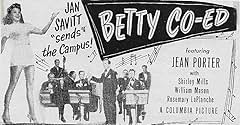Jan Savitt(1913-1948)
- Actor
- Music Department
- Soundtrack
Jacob Sarvetnick was a child prodigy on the violin, destined to become
Jan Savitt, leader of a popular swing band. Of Russian-Jewish ancestry,
his father had variously worked as a motor mechanic and as a drummer in
Tsar Nicholas II's Imperial Regimental
Orchestra. In the U.S. from the age of fifteen, Jan became the youngest
musician to play in the Philadelphia Symphony Orchestra, and, from
there, he advanced to concert master for the great
Leopold Stokowski. In the wake of
multiple scholarships and being recipient of the Philharmonic Society's
Gold Medal Award, he was soon leading his own string quartet. In 1935,
after graduating from the Curtis Institute of Music with a B.A., Jan
suddenly decided to forsake classical for popular music and organise a
dance band. He was eventually engaged by Philadelphia radio station KYW
as musical director. The resulting national broadcasts proved popular
with audiences and 'Jan Savitt & His Top Hatters' (so named, because
their ensemble uniform consisted of white tie, tails and top hat) soon
became one of the most highly rated big bands in America, playing the
swank hotels, theatres and ballrooms. The band featured a unique beat
called
'shuffle rhythm' (which may, or may not, have been originated by another bandleader, Henry Busse).
The 'Top Hatters' comprised between fifteen and eighteen musicians, plus vocalists. Famous sidemen included trombonist and future television composer Earle Hagen, drummer Nick Fatool and trombonist Urbie Green. Among the vocalists were Carlotta Dale, future movie actress Gloria DeHaven and Bon Bon (aka George Tunnell), the first black musician to work long-term in a white orchestra. Jan's theme song was "Quaker City Jazz". Other unique compositions for the band included the swinging "720 In the Books" (by arranger Johnny Watson), "Meadowbrook Shuffle", "It's a Wonderful World" and "Now and Forever". Jan also had noteworthy hits with his interpretation of "Tuxedo Junction" and "Make Believe Island". By the early 1940's, he added swing versions of classical compositions (mostly arranged by Jack Pleis), such as "The Sorcerer's Apprentice", "Prelude to Carmen" and Claude Debussy's "Afternoon of a Faun" to his repertoire. The band was featured in several B-movies, released by Warner Brothers and Columbia.
After World War II, Jan was forced to reduce the size of his band (now based on the West Coast) to eight musicians, due to tax debts. In 1948, on his way to a one-nighter in Sacramento, he suffered a cerebral haemorrhage and later died in a local hospital at the age of just thirty-six.
The 'Top Hatters' comprised between fifteen and eighteen musicians, plus vocalists. Famous sidemen included trombonist and future television composer Earle Hagen, drummer Nick Fatool and trombonist Urbie Green. Among the vocalists were Carlotta Dale, future movie actress Gloria DeHaven and Bon Bon (aka George Tunnell), the first black musician to work long-term in a white orchestra. Jan's theme song was "Quaker City Jazz". Other unique compositions for the band included the swinging "720 In the Books" (by arranger Johnny Watson), "Meadowbrook Shuffle", "It's a Wonderful World" and "Now and Forever". Jan also had noteworthy hits with his interpretation of "Tuxedo Junction" and "Make Believe Island". By the early 1940's, he added swing versions of classical compositions (mostly arranged by Jack Pleis), such as "The Sorcerer's Apprentice", "Prelude to Carmen" and Claude Debussy's "Afternoon of a Faun" to his repertoire. The band was featured in several B-movies, released by Warner Brothers and Columbia.
After World War II, Jan was forced to reduce the size of his band (now based on the West Coast) to eight musicians, due to tax debts. In 1948, on his way to a one-nighter in Sacramento, he suffered a cerebral haemorrhage and later died in a local hospital at the age of just thirty-six.









